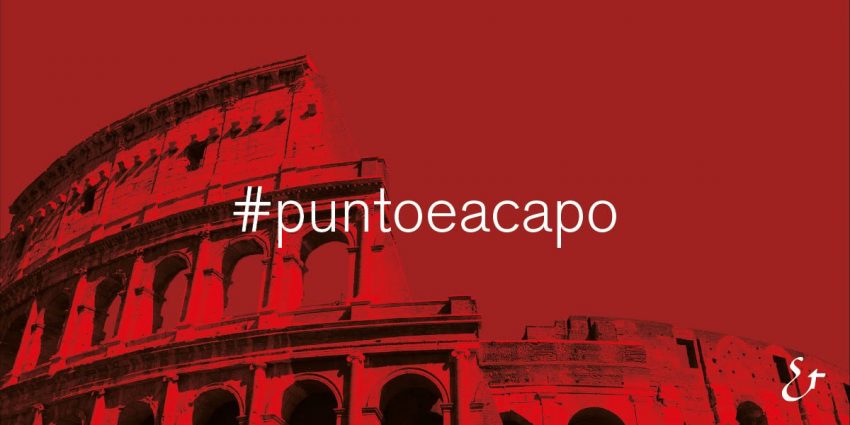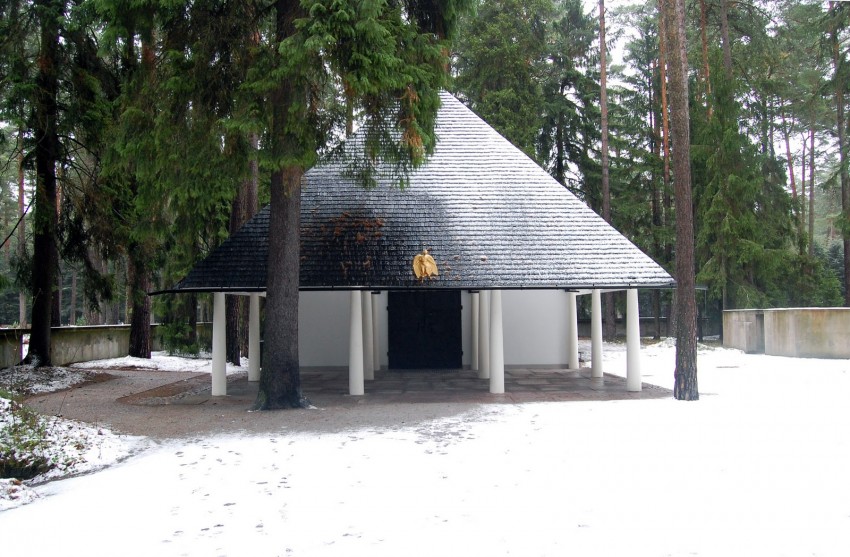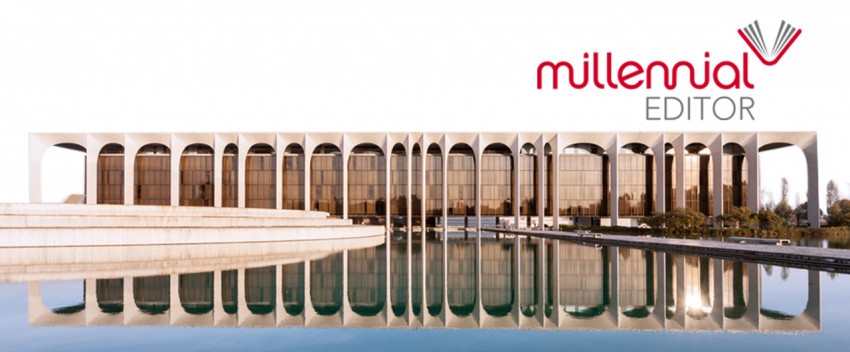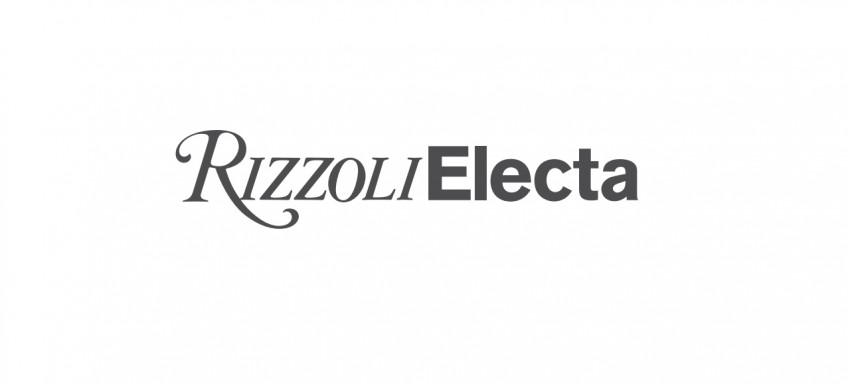Triennale Milano & Electa are devoting a long-awaited exhibition to Saul Steinberg
Saul Steinberg - Milano New York
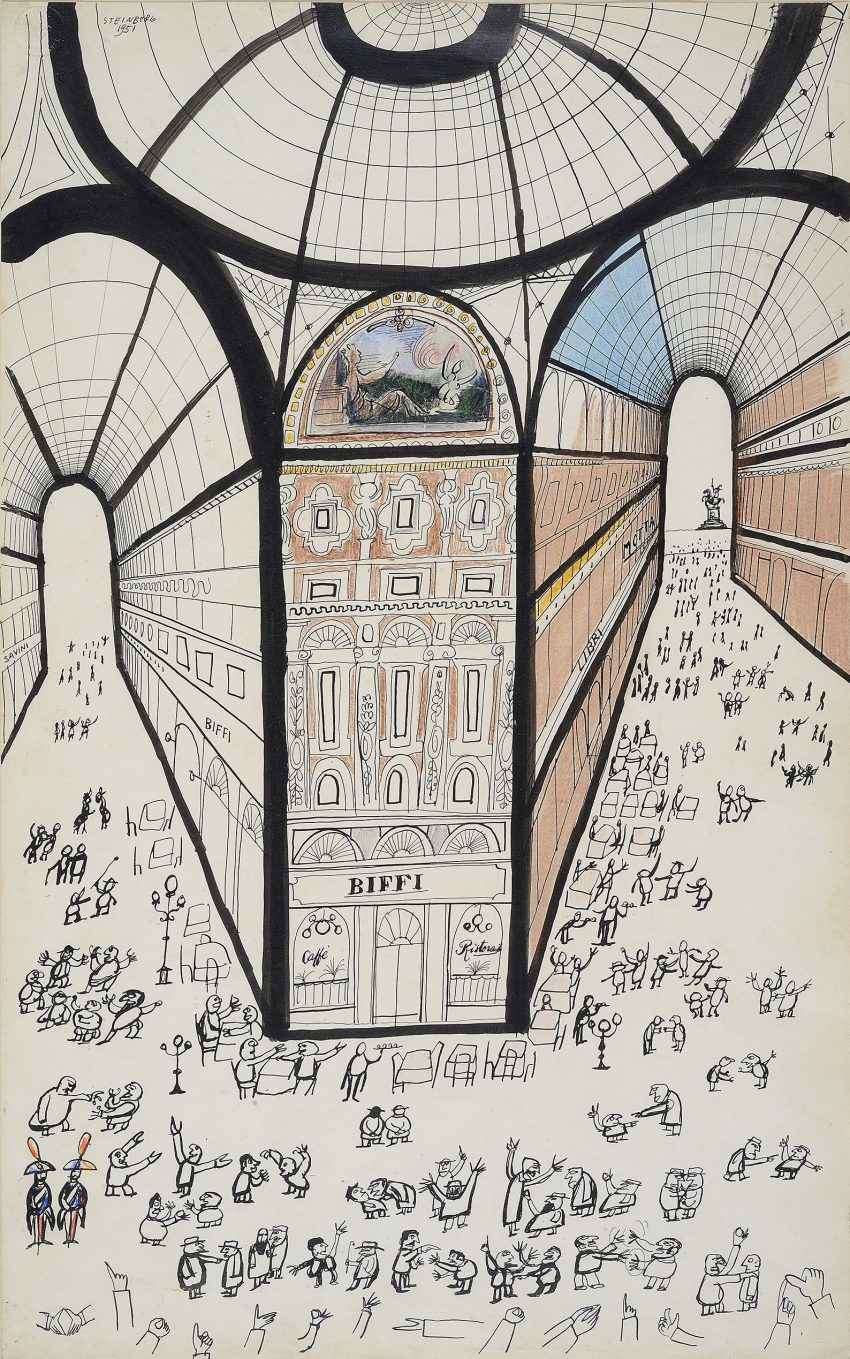
Triennale Milano & Electa are devoting a long-awaited exhibition to Saul Steinberg (1914-1999), curated by Italo Lupi and Marco Belpoliti in collaboration with Francesca Pellicciari. The exhibition is a tribute that Milan owes to this great artist, who dedicated so many of his sharply intelligent works to the city in which he resided during his formative years.
The installation on the first floor of the Triennale in the great “Curva”, a vantage point in the Palazzo dell’Arte, was designed by Italo Lupi, Ico Migliore and Mara Servetto in a sensitive dialogue with its architecture.
The exhibition is filled with drawings in pencil, pen, crayon; with works made using rubber stamps and watercolour, paper masks, objects/sculptures, fabrics and collages, documenting Steinberg’s intense and versatile artistic output. These works are complemented with documenting material and photographs which provide a closer understanding of the artist’s life. In ad- dition the set up shows a meticulous selection of original mag- azines and books including some of Steinberg’s most signifi- cant contributions, for instance the famous covers for ‘’The New Yorker’’. 350 works circa, come from important institutions, such as the Saul Steinberg Foundation, the Jewish Museum and the Hedda Sterne Foundation, New York, the Museum of Fine Arts, Boston, as well as collectors and friends of Steinberg, both in Italy and abroad.
On this occasion, there will be the opportunity to preview a selection of part of the important donation of works by the artist that the Biblioteca Nazionale Braidense recently received from the Saul Steinberg Foundation.
The exhibition is part of a journey that Triennale Milano is currently embarking, which involves several protagonists of twentieth century culture who, starting from Milan have created an aes- thetical vision that was able to spread its influence all over the world. A series of monographic exhibitions that restore greatness to complex characters, outlining new ways of interpretation that go beyond superficial labels and pigeonholing.
Steinberg never forgot the years spent in Milan (from 1933 to 1941), where he gained a degree at the faculty of Architecture in the Royal Polytechnic, besides making important friendships with several leading figures in the lively cultural world of the city, starting with his brotherly friend Aldo Buzzi.
Milan is also the place where his artistic career starts, thanks to his first contributions to satirical magazines such as Il Bertoldo and Settebello, in the 1930s, through which he gained his preco- cious fame as a cartoonist.
Saul Steinberg Milan New York at Triennale Milano takes its inspiration from these very beginnings to provide the first evidence for his connection with Italy in general, and with Milan in particular, but without neglecting other cities – whether real, like Venice or Carpi, or imaginary, the product of extraordinary pastiches of cityscapes composed of Roman cupolas and ar- chitectural fantasies, not related to any particular city but with a completely Italian flavour.
Due to racism, Steinberg was expelled from Italy in 1941 and through great difficulty, he reached the United States in 1942. From there, having joined the allied armed forces, he left in order to provide an eye-witness account of the events in that global conflict, reaching theatres of war in China, India, North Africa and even Italy.
From his war experiences would come important works, two of which – previously exhibited in the MoMA during the exhibition Fourteen Americans in 1946, will be in the Triennale.
The nucleus of the exhibition is a work that Steinberg made specifically for Milan: four preparatory drawings, each com- posed of a strip of paper, folded like a concertina, 10 metres long; after being enlarged photographically, these were en- graved, using the technique of “sgraffito”, onto the curved walls of the Labirinto dei ragazzi (The Children’s Labyrinth) intended by BBPR (a studio for architecture), for the 10th Triennale di Milano in 1954. These four leporelli (strips of paper folded into a concertina shape), part of the gift made to the Biblioteca Braidense, contain many of the artistic motifs and signs that Steinberg was aiming to develop throughout his long career. First and foremost is the motif of the line, the simplicity of which in Steinberg’s hands and mind, takes on inexhaustible forms in a continuous experimental narrative.
In order to provide a comprehensive representation of the Labyrinth, besides the documentation of the architectural proj- ect by the BBPR, from the Triennale archives, in this exhibition there is a Mobile by Alexander Calder, from the GAM (Gallery of Modern Art) in Turin, as a reminder of the one that stood in the centre of the maze.
It is no accident that Steinberg and Calder are side by side in that project: besides being very close friends (later, Steinberg would write a moving obituary for Calder) these two artists had already been working alongside each other as they were both commis sioned to prepare works for the Terrace Plaza Hotel being built in Cincinnati, in the late 1940s.
In the 1970s, Steinberg dedicates to Milan other supremely intelligent drawings, depicting the city as prompted by his memo- ries. We can see the forbidding twentieth century architecture of the Regime, still deep in grotesque scenarios of daily life under the Fascists, the places near the Polytechnic where he was living in Milan, and other postcards from his past: “At that time, the air in Milan was perfect, and the light was absolutely beautiful, and I witnessed something that I had seen before: the calm and silent awakening of a city: people walking, people on bicycles, trams, workers”.
Alongside this there is room for the longest synopsis possible of everything forming Steinberg’s varied and surprising universe: a glimpse of a world that accepts, interprets and reworks motifs and subjects of every kind, in a style and with a vision that are immediately recognizable.
The book: Steinberg A-Z
To accompany the exhibition there is a book published by Electa, with the title Steinberg A-Z, arranged like an “encyclopaedia” of that time: a volume edited by Marco Belpoliti, that analyses Saul Steinberg’s œuvre in its multiple aspects, from architecture to drawing, from his connection with Milan to his relationship with New York, his maps, his correspondence with Aldo Buzzi, the artists who were his friends and companions, such as Costantino Nivola and Alexander Calder, but also Alberto Giacometti and Le Corbusier. This book includes contributions by Stefano Boeri, Marco Sammicheli, Claudio Bartocci, Stefano Bartezzaghi, Francesco Cataluccio, Gabriele Gimmelli, Nunzio La Fauci, Francesca Pellicciari, Mario Tedeschini Lalli, Stefano Salis and others who were allocated the lemmata of the encyclope- dia, about one hundred entries providing a vision of Steinberg’s universe.
The installation at Triennale Milano
The space in which the great Steinberg exhibition is housed is imposing, due to its position in the vast and certainly symbol- ic glass-covered semicircle named “Curva” on the first floor of Triennale Milano. While highly significant in the architectural geometry of the palace, its completely glazed and extremely well-lit curved surfaces have required complex solutions in exhibiting the works, especially in respect of the very intense light.
“In tackling this new adventure, together with Ico Migliore and Mara Servetto, resolute travelling companions and often conduc- tors, we decided that the main constraint on the project was an installation that would respect the noble architecture of Giovanni Muzio, who designed the Palazzo dell’Arte” Italo Lupi points out. Filtered by an initial area that is extremely dynamic, due to its diagonal edges and the wealth of photographs and literary works on its walls, the actual exhibition hall is broken up by a series of luminous cases and horizontal tables, but above all by the huge bookcase that closely follows the curve of the semi-circle, hous- ing as well as revealing the works on display.
This huge bookcase has been considered as a powerful diorama, with the capacity to provide an accurate account of the complex nature of Steinberg’s works.
The requirement to regulate the lighting, which for many works has to follow extremely rigorous standards, has meant that all the glass surfaces needed to be blacked out completely. A panorama that emphasizes the spatial conception of the architecture with- out cancelling it out. Also, through a chink left open deliberately, one’s glance runs towards the green area of Parco Sempione (Sempione Park), in which the Labyrinth, the historical monument of the BBPR/Steinberg, had stood during the Tenth Triennale.
